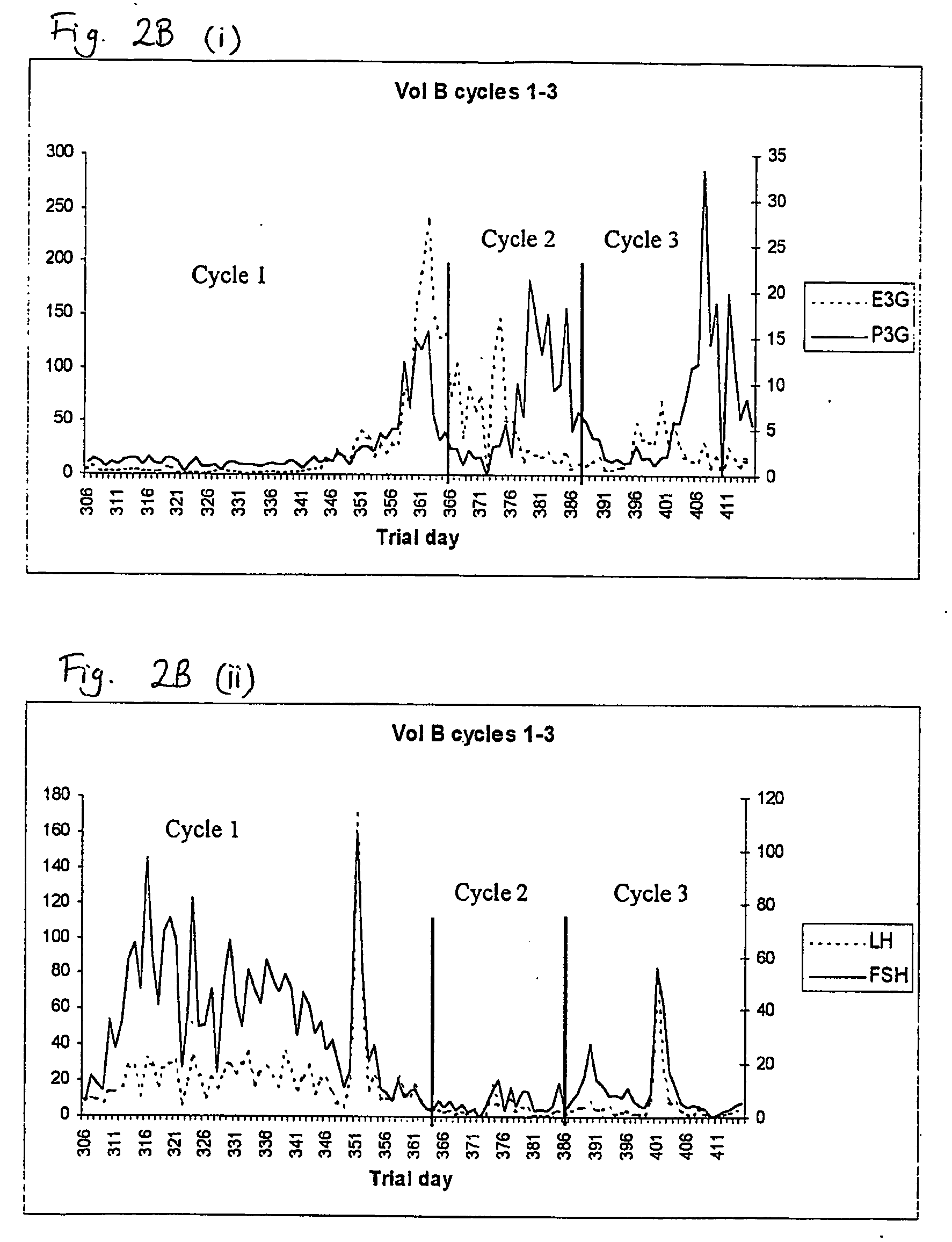Detection of impaired fertility
a technology of impaired fertility and detection field, applied in the direction of material testing goods, chemical methods analysis, instruments, etc., can solve the problems of inability to detect impaired ovarian function, unpredictable decline in fertility, and all women reach the end of their reproductive life and become infertile, etc., to achieve the effect of reusable and relatively expensiv
- Summary
- Abstract
- Description
- Claims
- Application Information
AI Technical Summary
Benefits of technology
Problems solved by technology
Method used
Image
Examples
example 1
[0058] The inventors gathered data from a confidential study involving a large number of women, aged 30-58, in which daily early morning urine samples were collected over an interval of 6-12 months and stored at 4 to 8° C. (containing sodium azide at 0.1% as preservative) prior to testing.
[0059] The samples were analysed to determine the concentration of a number of urinary analytes, including FSH, E3G, P3G and LH. Urinary analyte concentration was determined using an immunoassay technique, run on the AutoDELFIA system which is a high throughput automated system designed to operate up to 24 hours a day, with a minimum of operator intervention. Whilst this facilitated handling of the very large number of samples involved, in principle the same basic assay method could be conducted in a non-automated manner.
[0060] The particular assay used to measure FSH concentration involved streptavidin-coated plates, a biotin-labelled anti-FSH monoclonal capture antibody (MAb 4882), and a europi...
example 2
[0072] It was evident to the inventors that testing urinary FSH concentration on any single day could not discriminate between “retarded” and “normal” cycles, due to the considerable variability in analyte levels from day to day. On the other hand, it is desirable that the number of days on which tests need to be conducted is as few as possible whilst consistent with providing accurate information. The fewer the number of test days the cheaper the method, and the easier it is for unskilled subjects to perform the testing regime in their homes using simple test kits.
[0073] Thus there are a number of variables which the inventors investigated, including: day of cycle on which testing should commence (days 4, 5, 6, 7, 8 or 9); number of test days per cycle (5, 7, 10 or 14 tests / cycle); threshold FSH concentration above which a test would be considered “positive” (10, 15 or 20 mIU / ml); and number of “positive” tests required for a cycle to be declared retarded.
[0074] Retrospective ana...
example 3
[0083] The collected data showed that, in a retarded cycle, [0084] (a) the average FSH concentration is high throughout most of the follicular phase, and that the FSH peak day is unusually late; and [0085] (b) production of E3G is suppressed during the period of elevated FSH in the follicular phase.
[0086] Detailed statistical analysis of the collected data allowed the inventors to draw up two algorithms, defining a retarded cycle, respectively embodying observations (a) and (b) above.
[0087] The first algorithm is:
If (fmean>15 and fmaxday>7) then output=1
(1 being a retarded cycle, 0 being a normal cycle).
[0088] Fmean is the average (in mIU / ml) of FSH values from day 1 of the cycle up to, but excluding, the day on which there is a significant rise in E3G (or “ERiseDay”, which is the day [prior to occurrence of the LH maximum], on which the slope of the plot of E3G is maximal). (The inventors devised another algorithm which could be used to detect retrospectively the first sustai...
PUM
 Login to View More
Login to View More Abstract
Description
Claims
Application Information
 Login to View More
Login to View More - R&D
- Intellectual Property
- Life Sciences
- Materials
- Tech Scout
- Unparalleled Data Quality
- Higher Quality Content
- 60% Fewer Hallucinations
Browse by: Latest US Patents, China's latest patents, Technical Efficacy Thesaurus, Application Domain, Technology Topic, Popular Technical Reports.
© 2025 PatSnap. All rights reserved.Legal|Privacy policy|Modern Slavery Act Transparency Statement|Sitemap|About US| Contact US: help@patsnap.com



